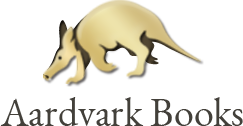Interior Landscapes: A Visual Atlas
Stefano Corbo
£35.00 £25.36
1 available
Book Details:
Publisher:The Images Publishing Group
ISBN:9781864706147
Published Date:27th July 2016
Dimensions:256 X 259 X 20 mm
Weight:1.3838 kilograms
Pages:224
Binding:Hardcover
Illustrations:400 colour
Condition:New
Notes:**HARDBACK**
Short Description
The aim of Interior Landscapes is to unveil those invariant forms, principles or concepts that crossed the History of Architecture. This is not just an academic text on theoretical issues, the book acts as a graphic atlas, a visual divertissement open to both students, educators and architecture lovers.
Full Description
The aim of Interior Landscapes is to unveil those invariant forms, principles or concepts that crossed the History of Architecture. Contemporary architecture is often characterised by the total interpenetration of interior and exterior configurations: the differentiation between these two dialectical poles has become indistinguishable, boundaries blurry and the result of any design process is a hybrid product, based on the superposition of different and heterogeneous layers. The impossibility of separating interior and exterior permits a general reorganisation of some topics internal to the territory of architecture, and also expresses the necessity of a systemic analysis of the most recent episodes. If at first glance this interest for a new kind of dialectics may appear as the most evident epiphenomenon of a wider and recent tendency, under careful examination one can observe that the tension between interior and exterior has always been present in architecture, differently articulated over the centuries, and expressed through several means of representation. Starting from the 18th century, "Interior Landscapes" will describe the nature of such a relation, in order to unveil those invariant forms, principles or concepts that crossed the History of Architecture, laid hidden underneath the events flowing, and periodically re-emerged to shape contemporary episodes. Separation, inversion, interpenetration, dissolution - all of these categories periodically characterise the interior-exterior dialectics. By borrowing different interpretative elements - drawings, photographs, illustrations - "Interior Landscapes" is configured as a visual atlas, aimed to demonstrate how, through the contamination of interior and exterior, always-new architectural insights emerge. AUTHOR: Stefano Corbo (b.1981) is an Italian architect, researcher at ETSAM Madrid and assistant professor at the Faculty of Architecture in Alghero, Italy (2011 2012). He received a MArch II in Advanced Architectural Design at ETSAM Madrid (Escuela Tecnica Superior de Arquitectura) in 2010, and is currently a PhD Candidate at the same Institute, with a dissertation titled: 'Archaeology of Infrastructures. A conceptual cartography'. Some of his texts have been published on international magazines ('Mark, CIRCO, CLOG, L Arca, Il Giornale dell Architettura, Dichotomy, Studio Magazine,' etc.) and he lectured as a guest at ETSAM, University of Miami, and University of Wisconsin. He worked as a designer at Mecanoo Architects (Delft, Netherlands) and in 2012 founded his own office: SCSTUDIO (www.scstudio.eu), a multidisciplinary network practising architecture and design. His work has received several awards for international competitions in Italy, Russia, and South Korea; his projects have been published worldwide (Archinect, Archdaily, Accesit, Metalocus). SELLING POINTS: - The aim of 'Interior Landscapes' is to unveil those invariant forms, principles or concepts that crossed the History of Architecture - This book is not a mere academic text on theoretical issues. The book's structure aims to be a graphic atlas, a visual divertissement open to both students-educators and architecture lovers - The book connects the most recent themes of the contemporary debate with those divulgative-commercial intentions that any editorial projects must have - The main challenge of any atlas is to allow connections, comparison, and analogies; the book helps achieve this based on the sequence of graphic illustrations - Theory and practice build a precise and clear structure, where the two essays (introduction and afterword) help to define the illustrations proper fields of action 53 col., 15 b.andw.


